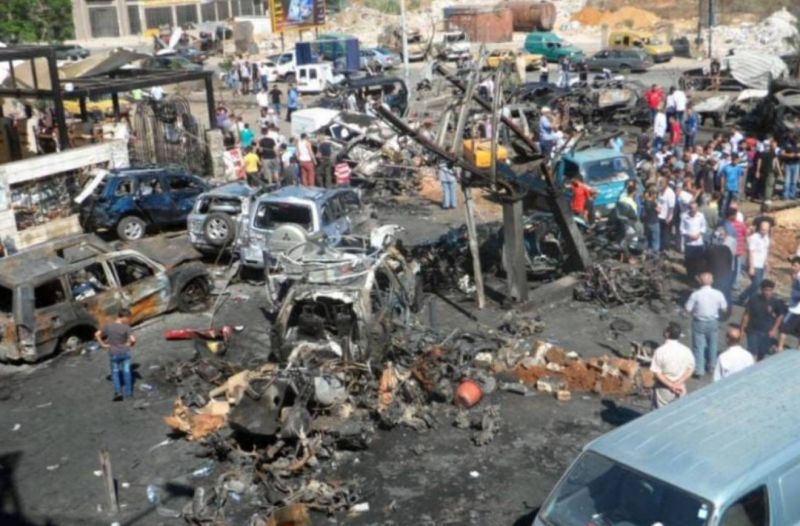
Aftermath of the destruction, Tripoli, August 24, 2013. (Credit: OLJ archives)
Ten years ago, Tripoli became the scene of the deadliest attacks since the end of the Lebanese Civil War, when a double car bomb shook the city, destroying two Sunni mosques. The mosques, one of which was frequented by the working classes and the other by the city’s political leaders and notables, were destroyed within minutes of each other during Friday prayers.
Carried out two years after the start of the Civil War in Syria, the attack raised fears of a spillover of sectarian unrest between pro-Assad and anti-Assad camps in the city. Since 2011, Tripoli, a predominantly Sunni city where an Alawite minority also lives, and Beirut’s southern suburb, which is predominantly Shiite, have experienced a number of attacks and armed clashes.
In Hezbollah’s stronghold in the capital’s southern suburbs, deadly explosions intensified after Hassan Nasrallah, the party’s Secretary General and an ally of the Assad regime, declared his readiness to go and fight in Syria himself. In Tripoli, armed clashes between the inhabitants of Jabal Mohsen, a predominantly Alawite and pro-Assad neighborhood, and Bab al-Tabbaneh, predominantly Sunni and anti-Assad, intensified.
More than 100 kg of TNT
The explosions in Tripoli occurred slightly before 2 p.m., during Friday prayers. The first explosion took place in front of the al-Taqwa Mosque, located in the city’s center, near the home of caretaker Prime Minister Nagib Mikati, as worshippers were leaving the site.
The second explosion happened in front of the al-Salam Mosque, close to the city’s port, which generally attracts politicians and worshippers from affluent circles. Marwan Charbel, Interior Minister at the time, estimated that some 100 kg of TNT had been detonated at the Mosque.
Images from the al-Taqwa Mosque showed Sheikh Salem Rafai preaching to a congregation before the explosion shook the premises. CCTV images show worshippers being thrown by the blast. Windows of nearby buildings were blown out, and cars burned. Charred bodies lined the streets. Miraculously, Sheikh Rafai survived the attack.
A few hours later, the heavy toll became apparent: the attacks killed 42 people and injured 500, as was recorded in L’Orient-Le Jour’s archives. Some reports announced the death toll at 47.
In the streets, tension was palpable. Hundreds of people chanted anti-Hezbollah and anti-Assad slogans outside the bombed al-Taqwa mosque. In June 2013, Sheikh Rafai called on his followers to wage jihad (holy war) in Syria against pro-Assad forces.
In 2016, the investigating Judge at the Court of Justice, Alaa Khatib, issued a 44-page indictment against two Syrian intelligence officers, Mohammad Ali Ali and Nasser Joubine. The defendants also include Ali Eid, an Alawite leader from Tripoli and founder of the Arab Democratic Party (PAD), who died in 2015 and was accused of helping one of the suspects flee to Syria. Ali Eid and his son Rifaat, who heads PAD, also fled to Syria in 2014, according to several witnesses.
The investigation also led to the arrest of several Lebanese from Jabal Mohsen.
In November 2019, eight people implicated in the double attack were sentenced to death by the Court of Justice, an exceptional court that rules on cases affecting state security and whose verdicts are final.
This article was originally published in French in L'Orient-Le Jour. Translation by Joelle El Khoury.